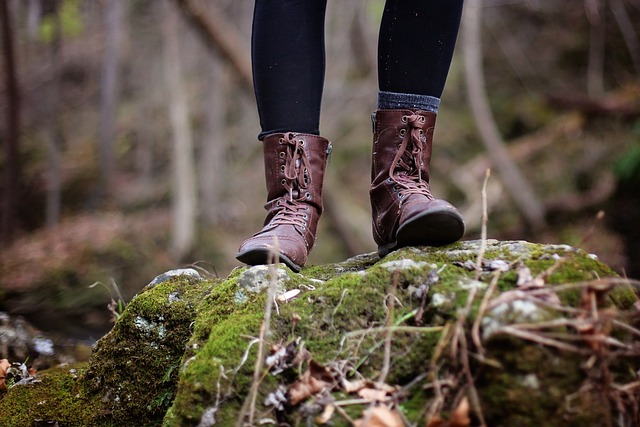Have you ever been ready for a beautiful day on the trails, only to be held back by the uncomfortable pinch of tight leather hiking boots? We’ve all been there, and I understand the struggle. Comfortable boots are not just a luxury; they’re a necessity for any serious hiker. Properly fitted boots provide better support, prevent blisters, and make your hiking experience significantly more enjoyable. This is why I’m dedicating today’s post to teaching you how to stretch your leather hiking boots for that perfect, custom fit.
In this guide, I’ll talk about why your new leather boots might feel a bit snug, and I’ll provide you with a comprehensive, step-by-step guide on how to stretch them. You’ll also find a list of materials you’ll need, things to consider during the process, and tips on how to maintain the perfect fit after you’ve achieved it.
So, if you’re ready to say goodbye to pinched toes and tight heels, then let’s get started on the journey to comfortable, well-fitted leather hiking boots.
Why Leather Hiking Boots May Require Stretching
Leather hiking boots are a popular choice among outdoor enthusiasts for good reasons. They offer excellent support, are incredibly durable, and have a timeless aesthetic. However, one thing about leather boots that often surprises new owners is that they can initially feel uncomfortably tight.
Understanding why this happens requires a quick lesson in how leather behaves. Leather is a natural material made from animal hide, and as such, it’s designed to be tough and resistant. When leather is new, it’s stiff and hasn’t yet had the opportunity to mold to the shape of your foot. This is where the ‘breaking in’ period comes into play.
The ‘breaking in’ period is the time it takes for your boots to adjust from the standardized factory shape to the unique contours of your foot. For some people, this period can be pain-free, but for many, it involves a fair bit of discomfort, including pinching, blisters, or just a too-tight fit.
Stretching your leather hiking boots is a practical solution to expedite this ‘breaking in’ process. It involves manually adjusting the boot material to better accommodate the shape of your foot, which can significantly enhance comfort and overall fit. The best part? Once stretched, leather tends to retain the new shape, giving you a pair of hiking boots that feel like they were custom-made for your feet.
What You Will Need to Stretch Your Leather Hiking Boots
The process of stretching leather hiking boots can be accomplished using a few simple tools that you may already have at home. Here’s what you’ll need to get started:
- A Boot Stretcher: This is a device designed to mimic the shape of your foot and expand the boot from the inside. They come in different sizes and shapes for men, women, and specific problem areas like the instep or the toes.
- Thick Socks: Thick socks, or even multiple pairs of regular socks worn together, can help stretch the boots by creating extra volume when you wear them.
- Shoe Stretching Spray: These sprays are formulated to soften the leather, making it more pliable and easier to stretch. They can be used in conjunction with a boot stretcher or thick socks for the best results.
- Heat Source (optional): A hairdryer can be used to warm the leather, making it more flexible and responsive to stretching. This method should be used cautiously to avoid damaging the leather.
- Rubbing Alcohol (optional): If you don’t have a shoe stretching spray, a solution of rubbing alcohol and water can also help to soften the leather.
- Leather Conditioner: After stretching, it’s important to condition the leather to keep it hydrated and prevent cracking or damage.
- Patience: Remember, stretching leather boots is a gradual process that should not be rushed. Trying to stretch boots too quickly can damage the leather and shorten the lifespan of your boots.
With these materials in hand, you’re all set to start the process of stretching your leather hiking boots. Let’s move on to the step-by-step guide that will walk you through the process.
Step-by-Step Guide on How to Stretch Leather Hiking Boots
Great, you have your tools ready! Now, let’s dive into the step-by-step process on how to stretch your leather hiking boots:
1. Using a Boot Stretcher
- First, insert the boot stretcher into your boot, ensuring it’s positioned correctly to address the areas where you need more room.
- Expand the boot stretcher slowly, allowing it to push against the leather. Most boot stretchers work by turning a knob or handle.
- Leave the stretcher in place for at least 8 hours, but ideally, 24 hours for better results.
- After the time has passed, remove the stretcher and try on your boots. If they’re still too tight, repeat the process.
2. Using Thick Socks
- Put on a pair (or two) of thick socks. The socks should be thicker than what you would normally wear with the boots.
- Put on your boots over the socks and fasten them as you normally would.
- Walk around in the boots for at least 20-30 minutes. The heat generated by your feet combined with the extra volume of the socks will help to stretch the leather.
3. Using Shoe Stretching Spray
- Spray the inside of your boots with the shoe stretching spray, focusing on the areas that feel especially tight.
- While the boots are still damp from the spray, follow either the boot stretcher or the thick sock method to stretch the boots.
4. Using Heat (Caution required)
- Put on a pair of thick socks and then put on your boots.
- Aim a hairdryer set to medium heat at the tight areas of the boots, keeping it moving so as not to overheat any spot.
- While the boots are warm, walk around in them until they have completely cooled down.
Remember, stretching your leather boots is not an instantaneous process. It requires patience and may need to be repeated a few times to achieve the desired fit. But with consistency, you’ll soon find your boots fitting more comfortably than ever before. In the next section, I’ll discuss a few things to keep in mind while stretching your boots to ensure you’re not causing any harm to your precious hiking companions.
Things to Consider When Stretching Leather Hiking Boots
While the process of stretching leather hiking boots is fairly straightforward, there are several things you should keep in mind to ensure that you’re not causing any harm to your boots. Here’s what to consider:
Potential Damage to Boots: Excessive stretching or stretching too quickly can potentially damage your boots. The leather may become overly stressed and crack, or the seams may start to tear. This is why it’s crucial to stretch your boots slowly and gradually.
Avoid Overstretching: Leather is a flexible material, but there’s a limit to how much it can be stretched. Try not to overstretch your boots in the hope of a faster result. It’s better to repeat the stretching process several times than to try and do too much all at once.
Boots May Return to Original Shape: Over time, and especially if they get wet, your boots may slowly return to their original shape. This doesn’t mean your stretching efforts were in vain, just that you may need to repeat the process occasionally.
Effect on Waterproofing: If your leather boots are waterproof, stretching them, especially using methods involving liquids or heat, may affect their waterproof properties. Be sure to reapply a waterproofing treatment after stretching if necessary.
Size Matters: While stretching can help boots fit more comfortably, it won’t make a boot several sizes too small fit correctly. Make sure to buy boots that are the correct size for your feet in the first place.
Seek Professional Help if Needed: If your boots are expensive or if you’re unsure about stretching them yourself, it may be wise to take them to a professional cobbler. They have the experience and tools to stretch your boots without damaging them.
How to Maintain the Perfect Fit After Stretching
Now that you’ve successfully stretched your leather hiking boots to achieve that comfortable, custom-fit feel, it’s crucial to maintain this fit for the long term. Here are some tips to help you do just that:
Regularly Condition Your Leather Boots: Conditioning your boots with a high-quality leather conditioner will help keep the leather supple and prevent it from shrinking back to its original size. It will also help prevent cracking or other damage that could occur from the leather drying out.
Store Your Boots Properly: After use, clean your boots and store them in a cool, dry place away from direct sunlight. Avoid storing them in damp or humid areas, as this could cause the leather to shrink.
Use a Shoe Tree: Shoe trees can help maintain the shape of your boots when you’re not wearing them. They can be particularly helpful if your boots tend to shrink back a bit over time.
Wear the Right Socks: Continue to wear thick socks, at least for a while, to ensure that your boots don’t shrink back to their original size.
Regularly Check the Fit: Keep an eye on how your boots fit over time. If they start to feel tight again, it may be time to repeat the stretching process.
Reapply Waterproofing Treatment: If your boots were waterproof before stretching, you might need to reapply a waterproofing treatment to ensure they continue to protect your feet from moisture.
With these tips in hand, you’re well-equipped to maintain the perfect fit of your boots after stretching. Remember, the key is consistency in care and timely intervention if you notice your boots shrinking back. Happy hiking with your now perfectly fitting leather hiking boots!
Conclusion
That brings me to the end of this comprehensive guide on how to stretch leather hiking boots. By now, you should have a clear understanding of why new leather boots often require stretching, the tools you need, and the steps to successfully stretch your boots for a more comfortable fit. Remember, the process might require some patience, but the comfort of well-fitted boots is well worth the effort.
I’ve also discussed how to maintain the fit of your stretched boots and the factors to consider during the process to prevent any damage. With proper care and attention, your leather hiking boots can provide you with comfort and durability for many adventurous hikes to come.
So next time you pull on your leather boots and hit the trail, I hope you do so with a comfortable stride and a smile on your face. After all, hiking is all about enjoying nature and having comfortable boots makes that experience all the more enjoyable. Happy hiking!
Frequently Asked Questions about Stretching Leather Hiking Boots
Q1: How long does it take to stretch leather hiking boots?
A: The length of time it takes to stretch leather boots can vary depending on the method used and how much stretch is needed. However, expect to leave a boot stretcher in for at least 8-24 hours, and if you’re using the thick socks method, plan on wearing them around the house for several sessions of 20-30 minutes.
Q2: Can I stretch my leather boots too much?
A: Yes, it is possible to overstretch leather boots if you’re not careful. If stretched too much, the leather can weaken, causing potential damage. It’s best to stretch gradually and try the boots on frequently to check the fit.
Q3: Will my stretched boots shrink back to their original size?
A: Over time, especially if the boots get wet, leather can contract and the boots may become tighter again. Regular care and conditioning of the boots can help maintain the stretch.
Q4: Can stretching damage the waterproofing of my boots?
A: The stretching process, especially if it involves heat or liquid, can potentially affect the waterproof qualities of your boots. After stretching, you may want to apply a waterproofing treatment to ensure your boots continue to protect against moisture.
Q5: Can all leather boots be stretched?
A: Most leather boots can be stretched to some extent as leather is a naturally flexible material. However, the amount of stretch possible will depend on the specific type of leather and the construction of the boot.
Q6: What if the boots are still too tight after stretching?
A: If your boots are still too tight after stretching, you may repeat the stretching process. However, if they remain uncomfortable, it might be wise to consult a professional cobbler or consider if the boots might be too small.
Remember, while stretching can improve the fit of your boots, it’s always best to start with boots that fit as well as possible right from the start. Stretching can make good-fitting boots great, but it won’t make ill-fitting boots fit correctly.










